Some of our favorite and most popular coffees are labeled “Terruño Nayarita,” which translates as “my Nayarit homeland” and designates high-quality sustainable coffees grown by family land-holders and small local cooperatives in the compact west-central Mexican state of Nayarit.
For exceptional Terruño Nayarita beans, search our coffee list for “Mexico”
Mexico has a unique position in the world of coffee – it is the number one producer of certified organic coffees, yet most of the coffee coming out of Mexico today is not considered to be top quality. This somewhat counter-intuitive situation is a result of the Mexican coffee industry’s unusual history.
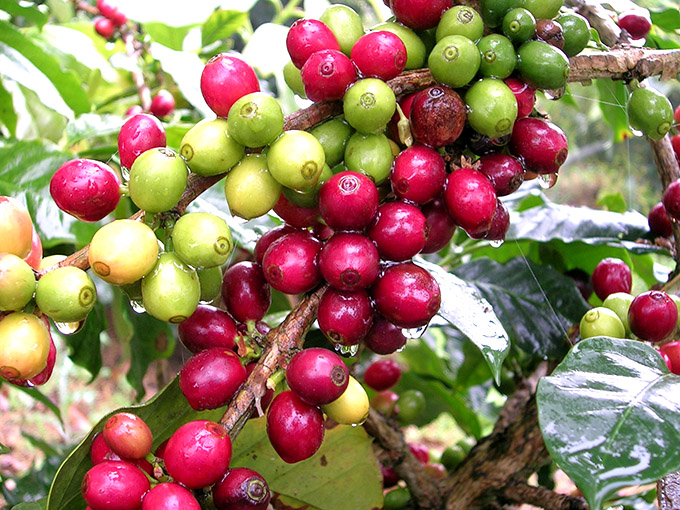
Ripening Coffee Cherries
Beginning in the late 1700’s, some coffee plantations were founded by wealthy Europeans who took advantage of colonial laws to “purchase” large tracts of land from the state even though there were many indigenous peoples still living in traditional ways in the isolated mountains of the southern-most states of Oaxaca and Chiapas. These states still have the most coffee estates and the highest indigenous populations to this day, but it has been a bumpy path across the centuries. In the 1800’s, wealthy landowners used many methods to force local peoples out of the prime agricultural land, then after setting up feudal-style plantations known as haciendas, they exploited the locals, forcing or tricking them into becoming serfs, enslaved peasants who are obligated to work the land but do not own any of its produce. The peasant laborers and many other poor rural folks are generically named campesinos (from el campo, countryside), while plantation owners were called patrónes. Greedy patrónes tricked displaced peoples into working by promising payment, but then charged so many fees for housing and other daily needs that campesinos very often found themselves further and further in debt, with no hope of ever owning land or leaving it to find opportunities elsewhere.
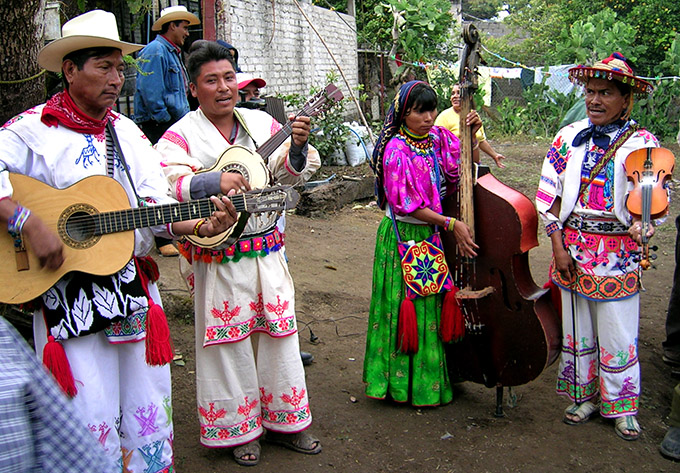
Local musicians in vibrant traditional garb
This was the only type of coffee cultivation happening prior to the land reforms that came with the Mexican Constitution of 1917, which precipitated out of the Mexican Revolution, when Emiliano Zapata and an impassioned movement of millions of campesinos overthrew the colonial-style government (though Mexico technically gained independence from Spain in 1821, the state was still controlled by European-descended elite landowners, especially the Catholic Church, for nearly 100 more years).
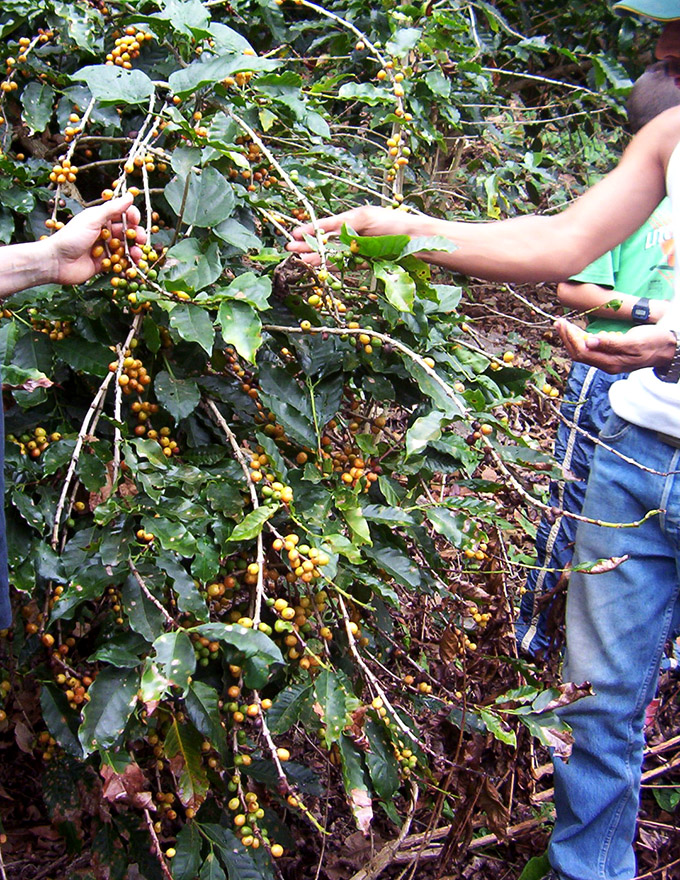
Small fincas are cultivated cooperatively,
often by a large extended family

Ejidos, communally-held lands, are common
throughout Mexico
Agrarian reforms returned some tracts of land to local indigenous communities, and throughout the 1900’s Mexican coffee cultivation gradually transformed into the more widespread granjas or fincas ( small-scale “farms” or “estates”) that are common today. Significantly, the Constitution freed thousands of serfs enslaved on plantations and gave them small parcels of land; campesinos who knew about growing coffee often continued in that industry. Lands held communally (not private property) in the traditional indigenous ways are called ejidos and are cultivated collectively. Ejidos were plentiful in mountainous regions, and almost overnight thousands of new coffee operations dotted the southern Mexican mountains, but it would take decades before these operations actually became profitable.
By 1973 the government-funded National Coffee Institute of Mexico (INMECAFE) was helping countless farmers with technical assistance, credit, transportation to markets, and guaranteed purchases ensured by large international contracts. In the last quarter of the century, small-scale coffee cultivation increased exponentially. However, when the Mexican government defaulted on foreign loans and was forced to undergo the painful process of neoliberal reforms called “structural adjustments,” INMECAFE collapsed in 1989, and without the support of the state many isolated mountain villagers were unable to find buyers for their crops. In the 1990’s, coffee prices plummeted, and predatory coffee brokers called coyotes exploited isolated and uneducated farmers, paying far less than the cost of production, and the industry went into a desperate tailspin for several decades. This is part of the reason that exceptional specialty coffees are relatively rare in Mexico – many campesinos are so impoverished that they have been unable to modernize their tiny family farms, and they are still growing coffee to the standards of the 1900’s.
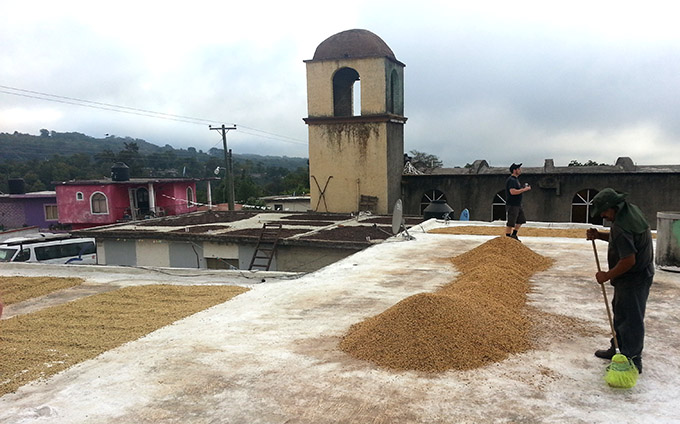
Coffee beans drying on home rooftops
Cooperatives and other social welfare and labor justice organizations have been forming to counteract these negative trends, and now small-scale coffee production is thriving again. This is mostly the result of local and national groups enacting the same types of programs that were formerly provided by INMECAFE, especially micro-loans and direct access to global specialty coffee markets. The move toward organic coffees began because the prices for organic beans are usually more stable, but it has grown because it is just so obviously the right thing to do for the land, water, and peoples. Now many of these co-ops promote a wide variety of sustainability initiatives, both environmental and economic, and they implicitly support the diverse social movements that are thriving in southern Mexico. Terruño Nayarita is an example of one of these grassroots “coffee justice” projects that seeks to improve the livelihoods and the lands of coffee producers by helping them to improve their crops and the prices they receive for them.
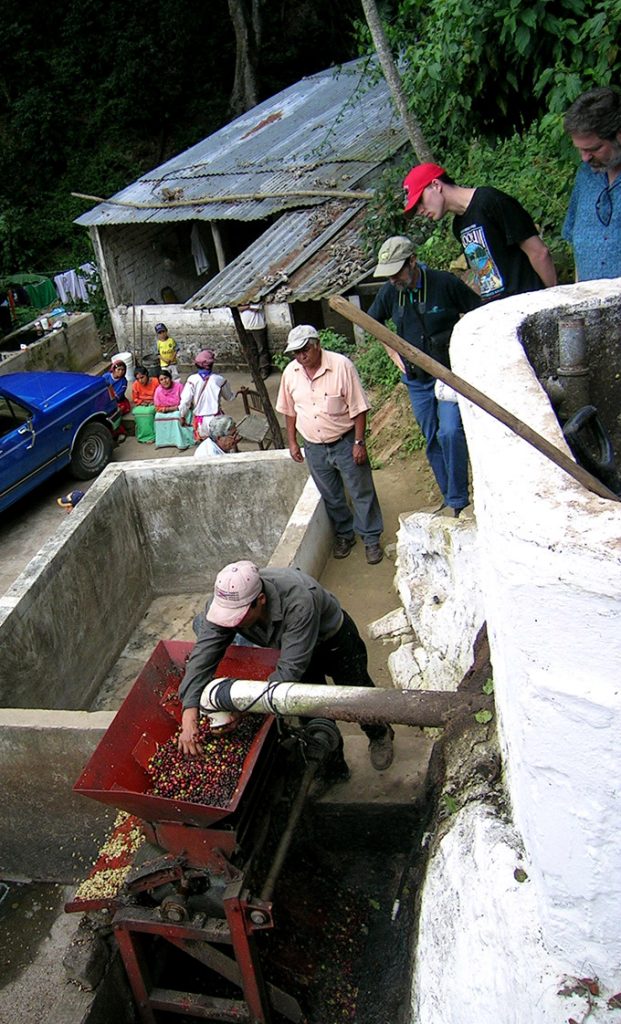
Small home wet mill
In Nayarit just as in Oaxaca and Chiapas, diminutive fincas are mostly owned and operated by indigenous campesinos who have very little access to education and technology. Frequently, these farmers have for decades received too little income to ever get ahead, and their cultivation methods suffered as they cut corners to reduce costs, leading to mediocre coffees and degraded soils. The Terruño Nayarita project seeks to change that – with a direct connection to specialty coffee markets, these family farms pull in much better income, and as they rebuild robust sustainable economies they also benefit from educational programs that teach about new agricultural technology with emphasis on environmental responsibility and stewardship.
Terruño Nayarita includes over 260 growers cultivating a total of around 650 hectares. At an average of 2.5 hectares (6 acres) per farmer, these tiny estates are well below the average of 3.5 hectares per farm in Mexico. And far below other countries – Brazil’s average size is about 7.5 hectares, large Brazilian fazendas can be 300-500+ hectares.
Most of the growers are clustered around an extinct volcano called Cerro San Juan, just west of Nayarit’s capitol Tepic. They cultivate shade-grown coffee on steep slopes isolated from civilization by eroded treacherous roads. Most of them have installed simple wet mills on the roofs of their houses or built into the hillsides, utilizing gravity to lessen the labor. Then final processing, sorting, and bagging is done at a centralized cooperative dry mill.
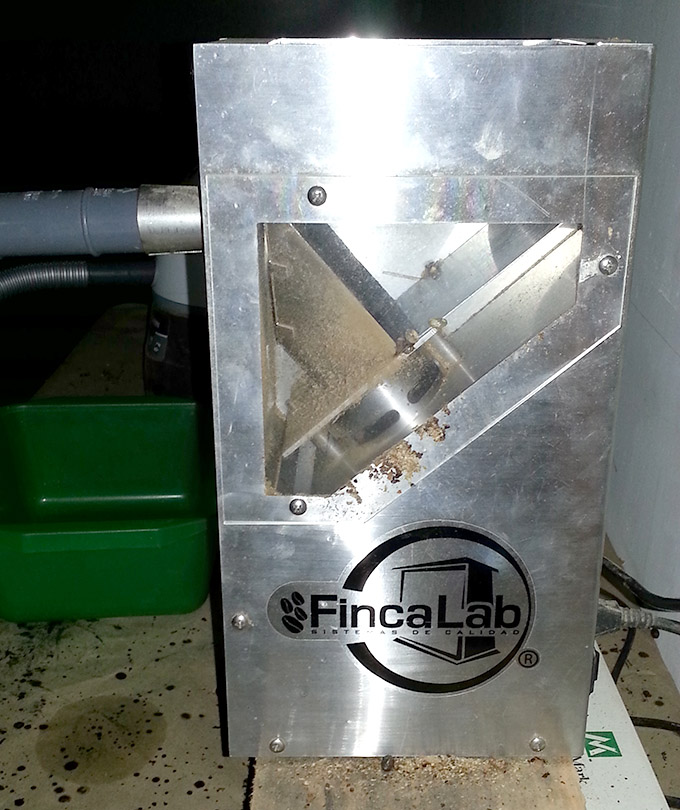
“FincaLab” includes a custom-designed
home coffee roaster
Supported by San Cristobal Coffee Importers in the USA, and Cafés Sustentables de México and the Universidad Autonoma de Nayarit locally, farmers are able to pool their crops together to reach the minimum volume that is expected by big importers. These organizations collaborate on innovative programs that educate and help to modernize operations in pursuit of more sustainable and higher quality production, like the “FincaLab” that growers can use to roast, cup, and assess their crops, learning about which qualities are highly prized in global markets, and how they can adjust their processing methods to achieve those results.
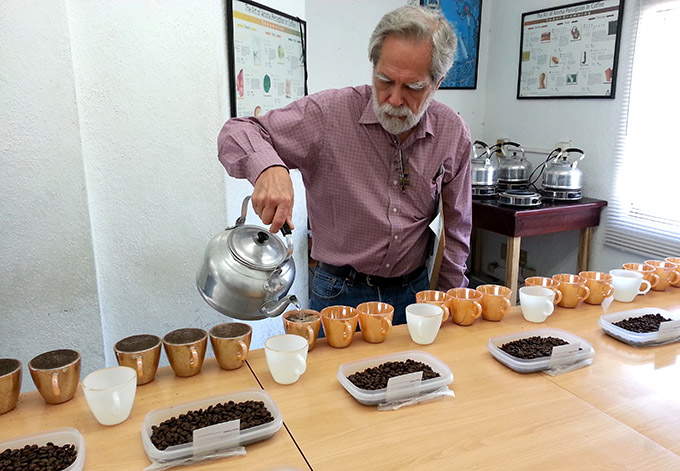
Cupping and comparing different coffees
Arguably the finest artisanal coffee produced in Mexico, each Terruño Nayarita bag is labeled with a barcode so that it can be traced with incredible accuracy – every batch of Terruño Nayarita coffee beans, no matter the size, is a singular micro-lot from a specific day, usually containing beans from only 2-3 estates, and consumers can learn exactly what is in their cup by going to www.trackyourcoffee.com – try it, using sample codes like GTN4601131 (Washed) or GTN4602119 (Natural) – these are just two examples, we cannot list every unique code from every single bag!
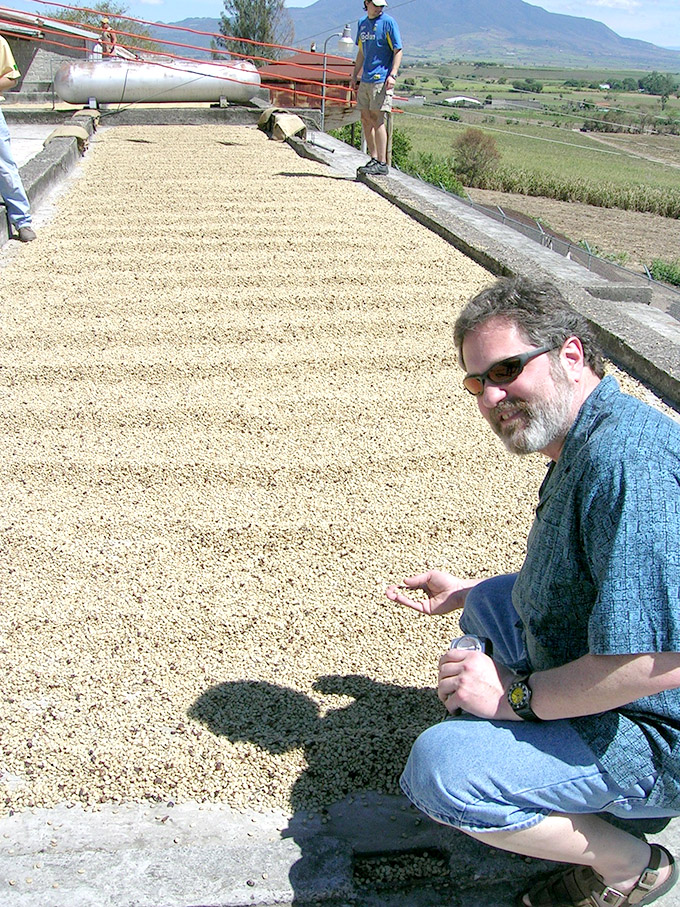
Garry Burman touring the Nayarit fincas!
At highest priority are the economic initiatives that help small-scale farmers to get decent, reliable prices for their premium coffee crops. An interesting approach employed by San Cristobal Coffee Importers is to pay a smaller upfront fee upon delivery of the crop (with bonuses for higher quality picking) in order to dissuade farmers from being tempted to sell to exploitative coyotes offering wads of cash, then an additional payment after processed beans are sorted, graded, and exported. This method has similar logic to the “community supported agriculture” (CSA) model that pays farmers upfront costs to guarantee their survival even if the year’s crop fails due to weather or pests. Together, the two payments bring total income much higher than what any coyote would pay, and they encourage sustainable and high-quality products.
There have been many challenges for the Terruño Nayarita project – in recent years they have struggled to stay in the black due to torrential rains that ruined everyone’s crops, government seizure of a newly constructed dry mill, and in the early years they almost went under when a corrupt administrator embezzled all the money – but in spite of these difficulties, they have maintained their focus on helping to uplift the campesinos of Nayarit, and through sheer dedication they have continued to improve their coffee offerings at the same time as they raise the standard of living for those who grow these exceptional beans.
Terruño Nayarita is such an inspiring project – we hope that others will emulate their innovative and effective programs. Because all around the world, most small coffee farmers still have very little power to negotiate prices, which are decided by inaccessible global commodity markets. Cooperation is essential to advancing farms and families, and producing an amazing cup of coffee is such a satisfying reason to work together!
Change is slow in impoverished rural areas, but over the years the partnerships of Terruño Nayarita have begun to transform local economies and quality of life around Cerro San Juan. The many family farms of Terruño Nayarita are re-establishing a culture of caring for the beautiful land that their ancestors have inhabited for millennia – they can be proud to be a part of a brand that celebrates “my Nayarit homeland,” and you can be proud to support this extraordinary solidarity project.
For exceptional Terruño Nayarita beans, search our coffee list for “Mexico”
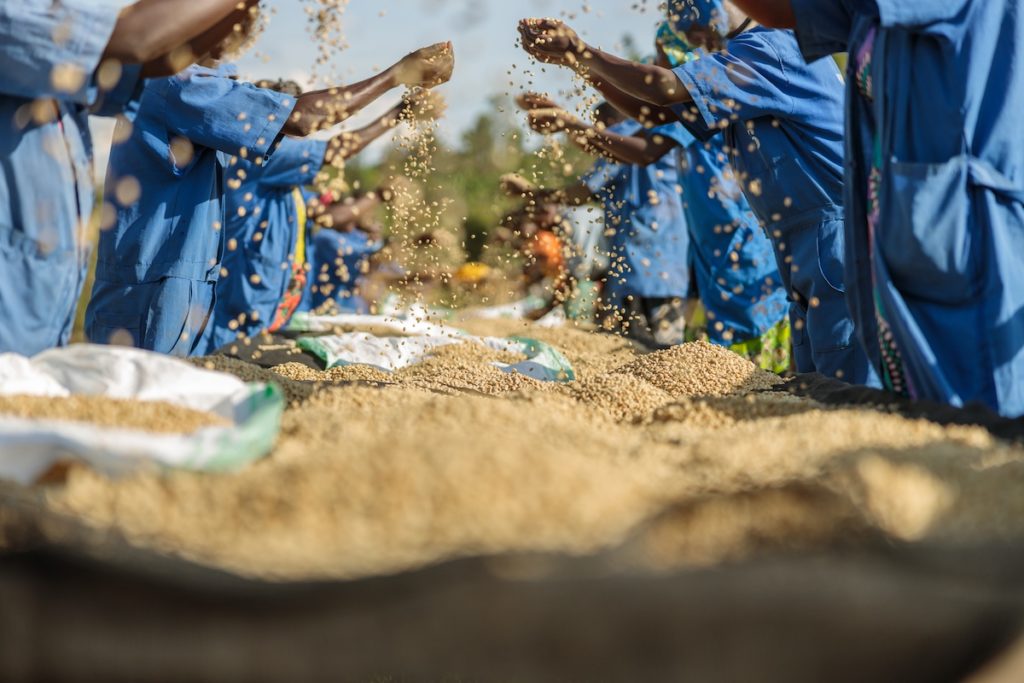
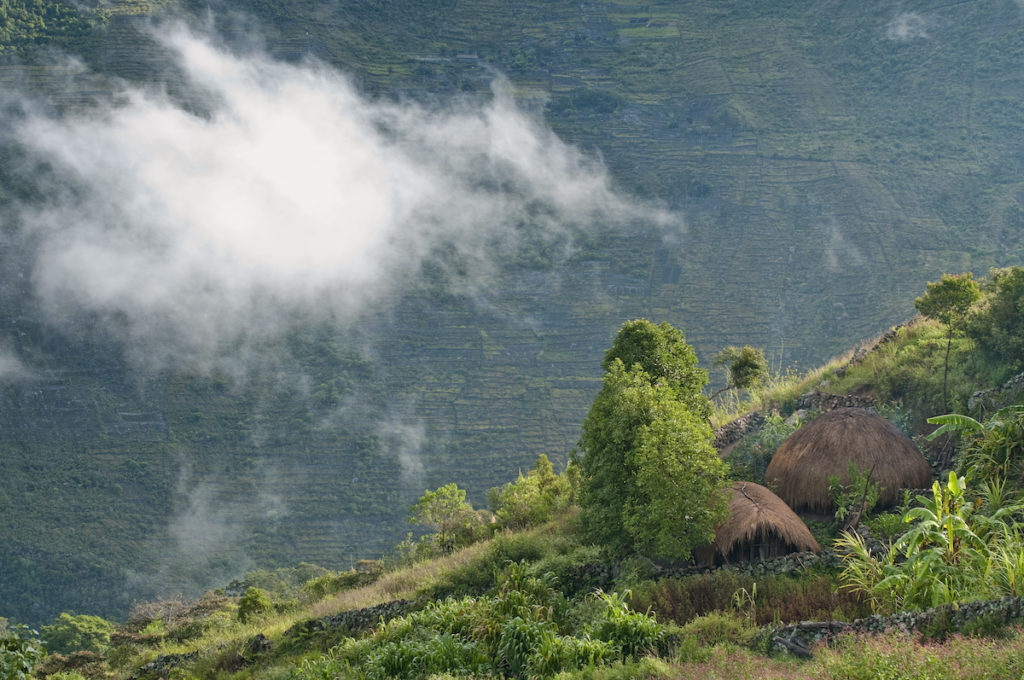

The best coffee I have tried is café Dundee and café de ryan I would love to get either of those here
A truly fascinating story. Thank you for taking the time to write and post this important story!